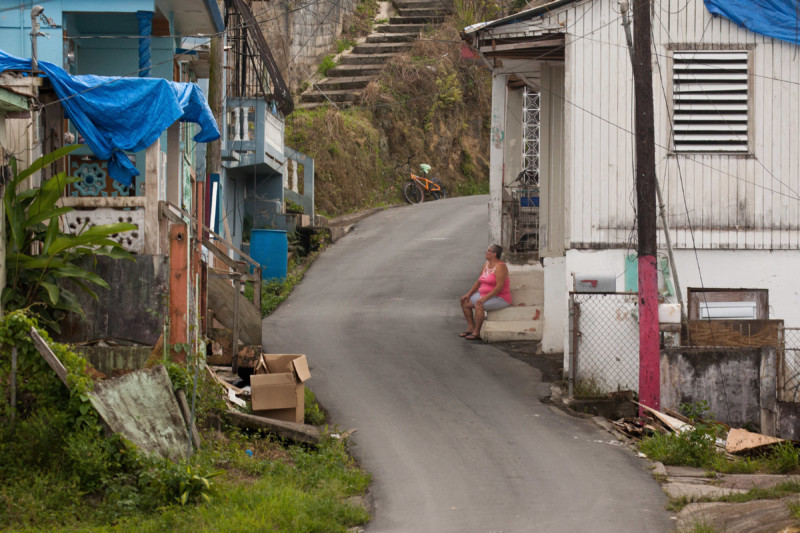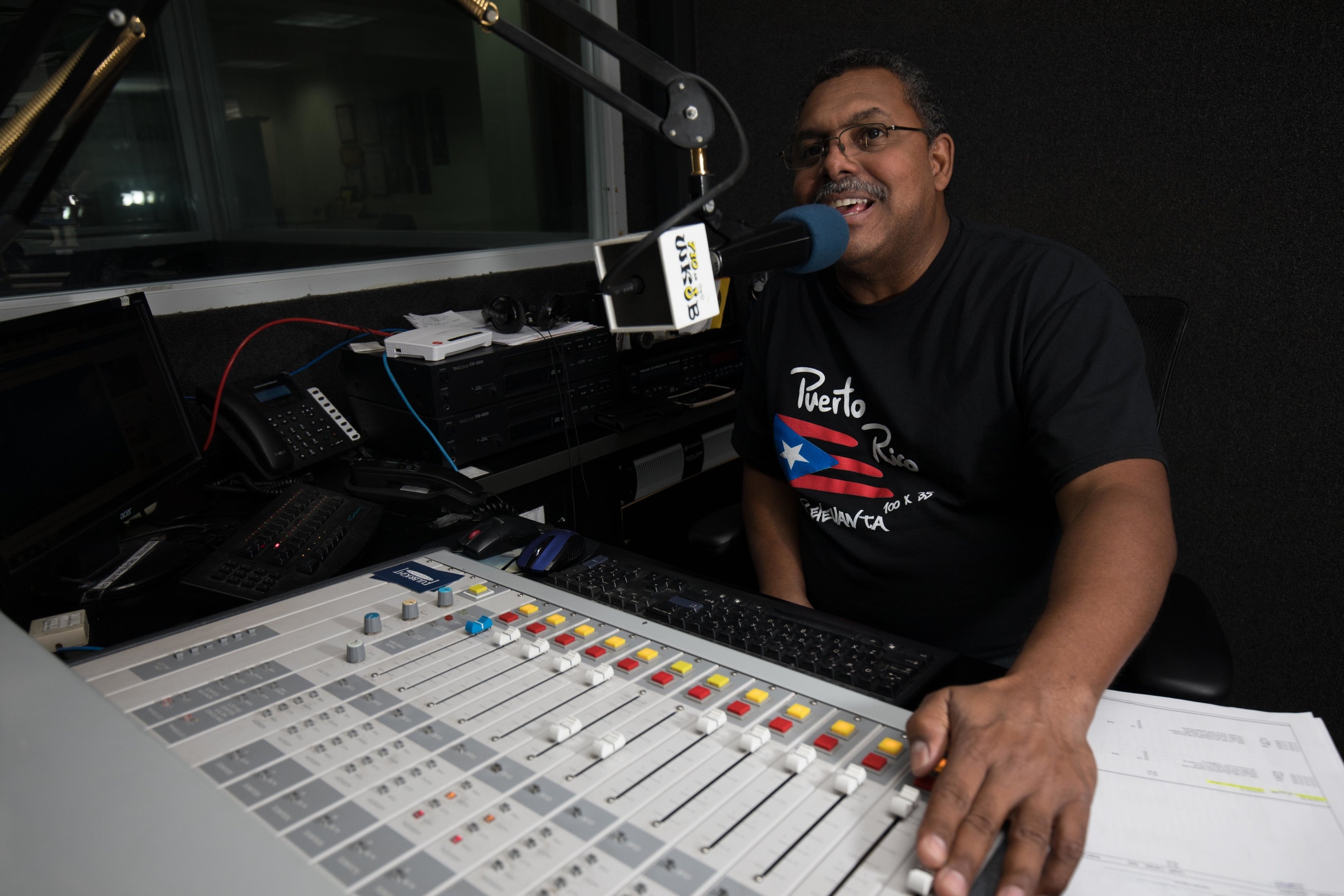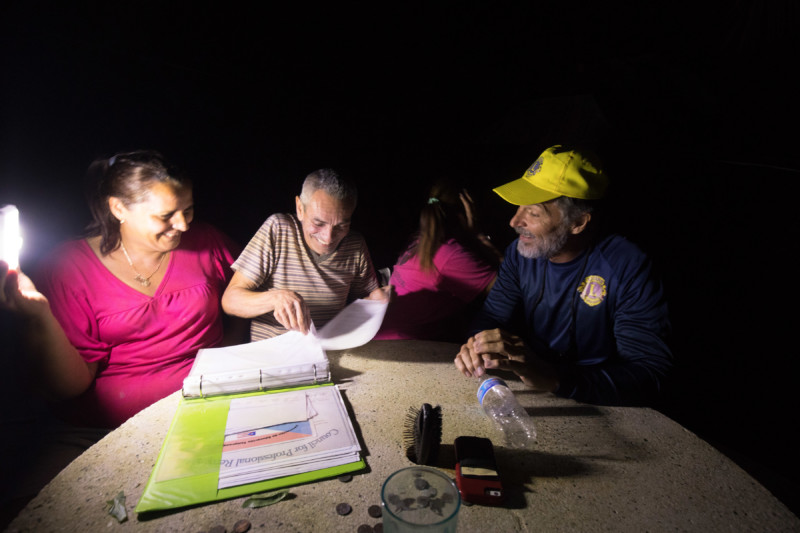Sign up for the daily CJR newsletter.
On September 19, 2017—the day before Hurricane Maria made landfall in Puerto Rico—the evening news team at WORA-TV in the coastal city of Mayagüez broadcast its final program before shutting down the station ahead of the storm.
“If Maria was going to be the monster everyone was predicting,” says Carolina Rodriguez Plaza, the news team’s production manager, “we knew the power could be cut off for a long time. We decided to shut down the station and send everyone home.”
Plaza told her team of 12 reporters not to worry, their salaries would be paid during the downtime and their jobs would be waiting for them when broadcasting resumed. Plaza retreated to her parents’ home, where she spent the night of the hurricane watching updates about the storm on cable TV. Then, as happened in homes across Puerto Rico, the lights flickered and the power went out. Hurricane Maria’s 150-mile-per-hour winds toppled power lines and torrential rains grounded out the island’s power grid.
Desperate for news about the disaster befalling her island, Plaza turned on a battery-powered radio and found that a local radio station, WKJB 710 AM, was maintaining its broadcast. The station’s managers had learned a lesson about disaster preparedness in 1998, when Hurricane Georges blew down their radio antenna and cut off the power. Since then, staff had equipped the station with a backup power generator and a reinforced antenna that could withstand hurricane-force winds.
“Maria erased the world of journalism in Puerto Rico,” Plaza says. “It reemerged in a new form, with radio playing an important role.”
ICYMI: Charlottesville got trolled. Reporters didn’t cover it.
To Plaza’s surprise, WKJB was being run by a motley crew of volunteer DJs. They called themselves “The Night Crew” and their improvised program was equal parts news program, variety show, and music channel. The DJs even took call-ins from listeners whose landline telephones still worked despite the power outage. Since the night of Hurricane Maria, “The Night Crew” has aired every night, raising the volunteer DJs to the status of folk heroes in Mayagüez.
“WKJB was a light on Puerto Rico’s darkest night,” Plaza says. “I told myself: Carolina, you have a moral duty to produce news for the people. I asked my father to take me to the station because I wanted to go on the air and rally my team.”
One lesson from the 2017 hurricane season, the most expensive in history, was to show the valuable role AM radio plays as a nexus for coordinated news reporting during a disaster event. WKJB wasn’t the only station to continue broadcasting through Hurricane Maria. In San Juan, WKAQ-AM stayed on the air, pausing momentarily when the wind ripped away part of the roof. And on the US mainland, AM radio stations provided real-time news coverage of the hurricanes that struck Texas, in August 2017, and Florida, in September.
“I told myself: Carolina, you have a moral duty to produce news for the people. I asked my father to take me to the station…”
“While Hurricanes Irma and Harvey wreaked their greatest damage,” Rich Appel wrote in a September 2017 story for Billboard, “most stations in their path not only quickly shifted from regular programming to that solely focused on storm coverage, but also used other available channels such as social media to help those in trouble, and sent recovery teams to parking lots and damaged homes to bring relief where it was needed most.”
With a machete in their car for chopping through downed branches, Plaza and her father drove through storm-battered Mayagüez on their way to the WKJB studio. They arrived to find that the station was being used for more than just broadcasting the news. It was serving as a distribution center for donated supplies and as a clinic for people with small injuries. Even the Mayagüez police had set up shop because their dispatch office had lost power.
Plaza asked the station’s manager, Ada Ramos, if she could volunteer as host of a news program. Ramos knew of Plaza’s reporting at WORA-TV and liked the idea of bringing her expertise as a street reporter to the airwaves of WKJB. Plaza then took a turn at the microphone and broadcast an all-points-bulletin for her TV broadcast team to report to the radio studio.
“I hope you and your families are okay, and that you’ve suffered no major damages to your homes,” Plaza said. “We are a news team and we can make a difference. There are stories that need to be told during this historic moment. Puerto Rico needs you.”
After the hurricane, Puerto Rico’s journalism industry was left in disarray. To cope with the lack of power and poor communication channels on the island, journalists pooled resources and formed reporting collaboratives. In San Juan, the offices of GFR Media, publisher of three major newspapers created a reporting hub for journalists traveling to the island to cover the disaster. In addition to producing its own in-depth coverage, GFR Media made it possible for journalists from The New York Times, Washington Post, and Huffington Post to report on Hurricane Maria.
Meanwhile, at the San Juan Convention Center, command center for the government’s emergency response effort, journalists pushed tables together to create impromptu newsrooms. And in the interior of the country, reporters pooled resources—satellite phones, solar charges, and WiFi hubs donated by the National Association of Hispanic Journalists as part of its #ConnectPuertoRico campaign.
“Bottom line is, if you take away a community member’s access to information, to communication, you eliminate the ability to connect, mobilize, and provide proper response in the wake of a disaster,” NAHJ’s president Brandon Benavides said in an interview with Mediashift in January.

Access to AM radio helped the residents of Puerto Rico stave off the isolating effects of Hurricane Maria. Photo: Ryan Bell
Puerto Rico was already suffering from an economic recession, and the journalism industry there was already struggling to be profitable. The storm dealt a significant blow. GFR Media laid off 59 employees at its two largest newspapers, El Nuevo Día and Primera Hora, on October 26, 2017. And Plaza knew of at least 40 more print and television journalists who lost their jobs on the west coast of Puerto Rico.
“Maria served as a moment of contraction in the news industry,” says Plaza. “Meanwhile, AM radio emerged even stronger. Young people in the under-35 demographic are listening to radio news for the first time in their lives. Radios are at the center of a culture shift. Neighbors sit together drinking coffee and listening to the news.”
“Maria served as a moment of contraction in the news industry,” says Plaza. “Meanwhile, AM radio emerged even stronger. Young people in the under-35 demographic are listening to radio news for the first time in their lives.”
According to The Miami Herald, increased radio listenership resulted in an advertising boom. At WAPA Radio, an AM station based in San Juan, advertising went up by 300 percent the month following Maria. At Radio Isla, an AM station also broadcasting in San Juan, commercial breaks doubled in length from four to eight minutes between pre- and post-Maria. And in January, Inside Radio reported the record-setting sale of an FM translator tower in Mayagüez for $500,000. Not only was it the highest price ever paid for a translator in Puerto Rico, it ranked as the second largest sale of its kind in the US over the past year.
“Contrary to predictions and global trends in the industry, radio proved itself in this circumstance to be vital,” Rafael López of Radio Isla told The Miami Herald. “It became something of a first responder and the first line of help.”
On the day after the storm, when Plaza’s announcement went out on the airwaves of WKJB 710 AM, several reporters either came to the station or sent word of their willingness to volunteer. Among them was veteran news reporter Julio Víctor Ramírez-Ferrer, editor-in-chief of La Calle Digital, a Spanish-language news website knocked offline by the power outage. Plaza and Ramirez-Ferrer agreed to co-host a show they would eventually name “Con Base y Fundamento,” which translates roughly to “The Basics and Fundamentals.” A government official used the phrase in an interview with them about an education policy. “I’ll explain it to you in the most basic and fundamental of terms,” he’d said, using a tone that struck Plaza and Ramirez-Ferrer as condescending and pedantic.
“It’s an inside joke,” Plaza says. “We want our show to hold people in power responsible for their actions.”
They organized teams of volunteer reporters into regional beats. The reporters found troves of stories on the streets of Mayagüez in need of coverage. The backup power supply at the county morgue was faltering, threatening to thaw 16 bodies in the refrigerated cooler. The local hospital had a shortage of oxygen tanks and purified water. A large number of homes destroyed by the storm weren’t built according to code. The county’s engineering department was abusing its authority to declare some public schools unsafe to inhabit, to justify shutting them down to save money.
“A lot of these stories were issues that were already going on in Puerto Rico,” says Plaza. “Hurricane Maria brought them to the surface.”
Thirty-three days after the storm, the power was turned back on at WORA-TV. Plaza and her team returned to their jobs producing the evening news program. And the return of power to Mayagüez had also allowed Ramirez-Ferrer to bring La Calle Digital back online.
Today, as hurricane season approaches again, Plaza and Ramirez-Ferrer continue co-hosting their hour-long program, Monday through Friday, on WKJB 710 AM. They use the channel to expand the reach of the reporting they do for their respective news organizations. Hurricane Maria taught them that, for journalists living in disaster-prone regions, it’s important for news organizations to collaborate and to embrace communication mediums once thought obsolete.
“When the power goes out,” Plaza says, “a $5 transistor radio is more valuable than a smartphone.”
ICYMI: Meet the journalism student who found out she won a Pulitzer in class
Has America ever needed a media defender more than now? Help us by joining CJR today.








